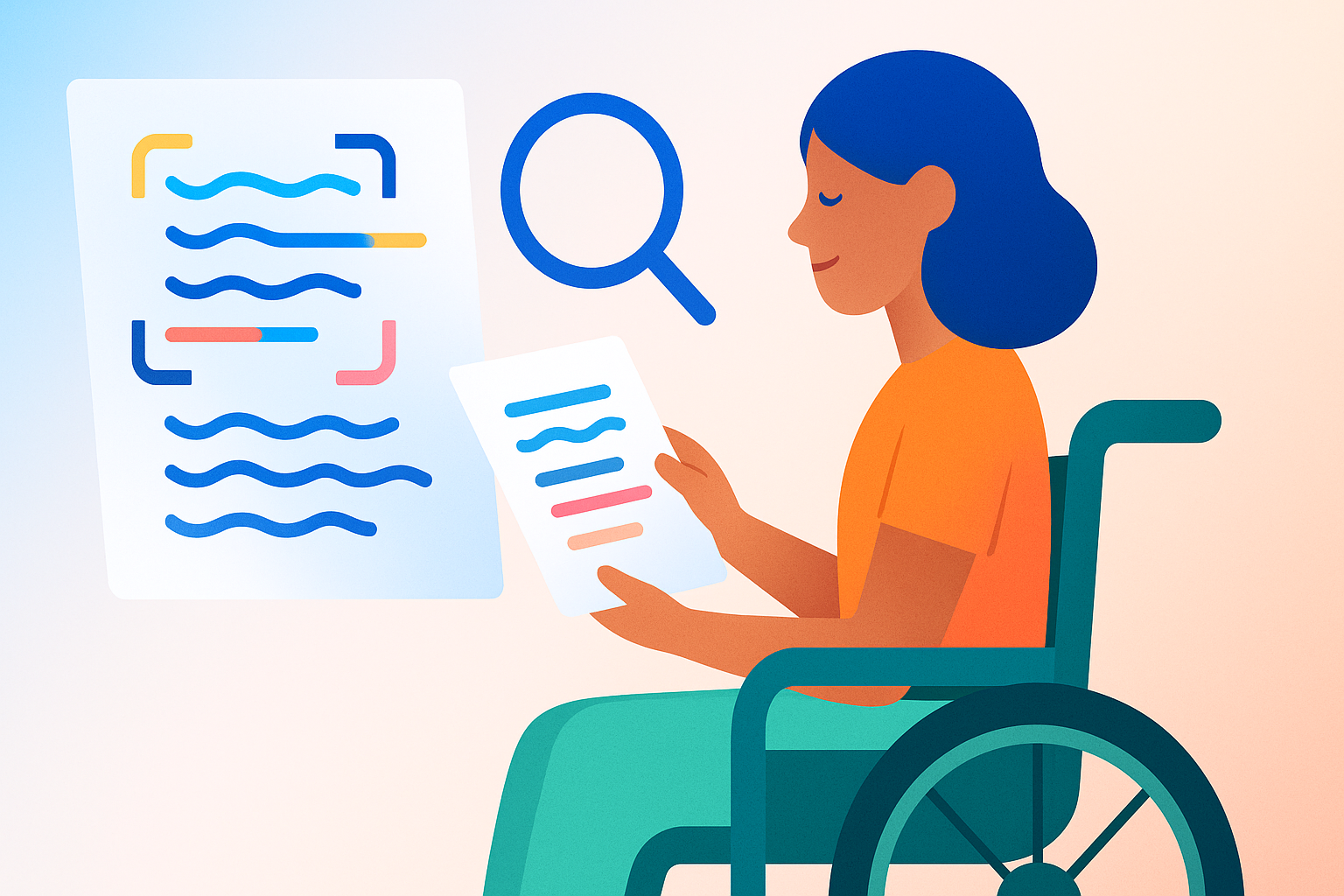


Optical Character Recognition (OCR) systems, also known as text recognition technology, convert printed or handwritten text into digital format. These accommodations help individuals with visual impairments, dyslexia, or reading difficulties by transforming physical documents into accessible, editable text. OCR systems improve access to printed materials such as books, forms, and signage by enabling screen readers or text-to-speech software to interpret the content. By digitizing text quickly and accurately, OCR technology supports greater independence and productivity in educational, workplace, and daily life settings.
Start by selecting a reliable OCR software or device compatible with your needs. Scan or photograph the printed material in good lighting to improve accuracy. Review the converted text for errors and correct them as needed. Regularly update the software to benefit from improvements. Store digital files securely and organize them for easy access. Combining OCR with screen readers or other assistive tools maximizes usability and accessibility.
Disclo streamlines requests, documentation, and tracking for Optical Character Recognition (OCR) Systems, so HR teams and employees spend less time on paperwork and more time working productively.
